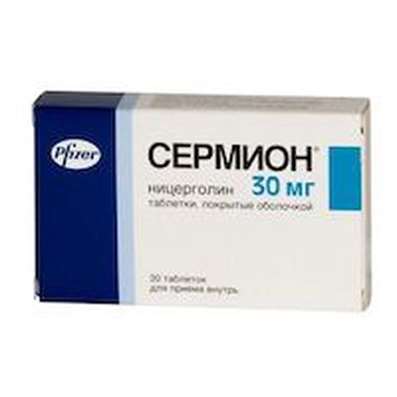Instruction for use: Diapam
I want this, give me price
Trade name of the drug – Diapam
Active substance: Diazepamum (genus. Diazepami)
Chemical name: 7-Chloro-1,3-dihydro-1-methyl-5-phenyl-2H-1,4-benzodiazepin-2-one
Dosage Form: tablets
Composition of Diapam1 tablet contains 5 mg diazepam.
Pharmacotherapeutic group: Anxiolytics
ATX Code
N05BA01 Diazepam
The nosological classification (ICD-10)
F10.3 abstinence: Alcohol withdrawal syndrome; abstinence symptom; Abstinence syndrome in alcoholism; abstinence; alcohol abstinence; alcohol withdrawal; Alcohol abstinence; Alcohol withdrawal syndrome; withdrawal disorder; withdrawal state; alcohol withdrawal syndrome; withdrawal syndrome; The syndrome of alcohol abstinence; alcohol withdrawal syndrome; Status of abstinence.
F32 Depressive episode: adynamic subdepression; Astheno-adynamic state subdepressive; Asthenic-depressive disorder; Asthenic-depressive state; Asthenic-depressive disorder; Asthenic-depressive state; Major depressive disorder; Sluggish-apathetic depression with inhibition; Double depression; depressive pseudodementia; Depressive disorder; Depressed mood disorder; Depressive disorder; mood Depressive disorder; the doldrums; Depressive disorders; Depressive syndrome; Depressive syndrome larvirovanny; Depressive syndrome with psychosis; masked Depression; Depression; exhaustion Depression; Depression with symptoms of lethargy within cyclothymia; Depression smiling; involutionary depression; involutionary melancholy; involutional depression; Manic-depressive disorder; masked depression; Melancholic attack; Neurotic depression; Neurotic depression; Shallow depression; Organic depression; Organic depressive syndrome; Simple depression; Simple melancholic syndrome; Psychogenic depression; Reactive depression; Reactive depression is a moderately severe; psychopathological symptoms; Reactive depression; Reactive depression; Recurrent depression; Seasonal depressive syndrome; Senesto-pathic depression; senile depression; Symptomatic depression; somatogenic depression; cyclothymic depression; Exogenous depression; lypothymia; Endogenous depression; The endogenous depressive syndrome.
F40.0 Agoraphobia: Claustrophilia; Fear of staying in a crowd.
F41 Other anxiety disorders: anxiety Relief; Nonpsychotic anxiety disorders; An alarm condition; Anxiety; Disturbingly suspicious condition; Chronic anxiety; Sense of anxiety.
F44 Dissociative [conversion] disorders: Dissociative phenomena; Conversion disorder; Conversion symptoms; pseudodementia; Psychogenic psychosis.
F45 Somatoform disorders: Psychosomatic diseases; Psychosomatic disorders; Psychosomatic disorders; anxiety states with somatic diseases; Functional psychosomatic disorders of the cardiovascular system.
G47.0 Disorders of falling asleep and maintaining sleep [insomnia]: Insomnia; Insomnia, especially difficulty falling asleep; desynchronosis; Prolonged sleep disturbance; Difficulty falling asleep; Short-term and transient insomnia; Short-term and chronic sleep disorders; Short or shallow sleep; Violation of sleep; Disturbed sleep, especially in the phase of falling asleep; Infringements sleep; sleep disturbances; Neurotic sleep disturbance; Shallow superficial sleep; shallow sleep; Poor quality of sleep; Night awakening; sleep Pathology; Postsomnic violation; transient insomnia; Trouble falling asleep; Early awakening; Early morning awakening; Early awakening; sleep disorder; somnipathy; persistent insomnia; difficult to fall asleep; difficulty falling asleep; Difficulty falling asleep in children; persistent insomnia; Worsening sleep; Chronic insomnia; Frequent night and / or early morning awakening; Frequent nocturnal awakening and a sense of the depth of the non-sleep; Night waking.
R25.2 Cramp and spasm: Painful muscle spasm; Mimic spasm; Muscle spasticity; Muscle spasms; Muscle spasms in tetanus; Muscle spasms of central origin; Muscle spasms of; Muscle spasm; Neurological contracture with spasms; Night cramps in the limbs; Night cramps in the legs; Night leg cramps; Symptomatic convulsive state; West syndrome; Smooth muscle spasm; Spasm of smooth muscle; Spasm of vascular smooth muscle; Muscle spasms; The spasm of the striated muscles due to organic diseases of the central nervous system; The spasm of skeletal muscles; The spasms of smooth muscles of internal organs; Muscle cramps; The spasms of skeletal muscles; Spastic condition of striated muscle; Spastic pain; Spasmodic state of smooth muscle; Spasticity of the skeletal muscles; Muscle cramps; Convulsions; Leg cramps; Seizures of central origin; Convulsive state; Spastic syndrome; Convulsive status in children; Tonic seizures; The phenomenon of folding knife; Cerebral spastic syndrome.
R45.7 State of emotional shock and stress, unspecified: Exposure to stressors; Exposure to extreme situations; Long-term emotional stress; Neuropsychiatric stress; occupational stress; Psychological stress at interrail; Psycho-emotional overload and stress; Psycho-emotional tension in stressful situations; emotional stress; stress condition; Stress; The stress load; stress state; stressful situations; stress state; The stresses of everyday life; Chronic stress.
Pharmacological Properties of DiapamPharmachologic effect
Mode of action - an anticonvulsant, anxiolytic, muscle relaxant, anxiolytic, hypnotic, sedative.
Pharmacodynamics
Soothing and anti-anxiety effects are due to the influence of benzodiazepine receptors of the limbic system; muscle relaxant and anticonvulsant - inhibition of spinal reflexes.
Indications for Diapam
Anxiety, insomnia, nervous tension, agitation, anxiety, neurovegetative disorders, hypochondriacal and hysterical reaction, dysphoria, phobia, depression, withdrawal syndrome, convulsions.
Contraindications for Diapam
Hypersensitivity, myasthenia gravis, the first trimester of pregnancy, lactation.
Diapam Dosage and Administration
Inside, typically 2.5 mg 3 times a day or at bedtime. Treatment of elderly, debilitated patients, patients suffering from atherosclerosis, it is advisable to start with lower doses. A working patients are advised to take a major dose in the evening. To eliminate withdrawal excitation - 5-10 mg 2-3 times a day in severe cases to 60 mg per day.
Side effect of Diapam
Drowsiness, weakness, dizziness, ataxia, paradoxical agitation, hypotension, hypotonia, hypothermia, respiratory failure, slow reaction speed.
Interaction
The effect of increasing the phenothiazines, barbiturates, MAO inhibitors, cimetidine, alcohol.
Overdose of Diapam
Symptoms: drowsiness, sedation reflexes possible - coma.
Treatment: symptomatic. The specific antidote - flumazenil.
SPECIAL INSTRUCTIONS for Diapam
Patients who use the drug should refrain from drinking alcoholic beverages. When administered in combination with neuroleptics, antidepressants, sedatives, hypnotics, analgesics and anesthetics enhanced their inhibitory effect on the central nervous system.
Storage conditions of Diapam
In a dry place at room temperature.
Keep out of the reach of children.
Shelf life of Diapam
3 years.
Do not use beyond the expiration date printed on the package.
Conditions of supply of Diapam from pharmacies
On prescription.

 Cart
Cart





